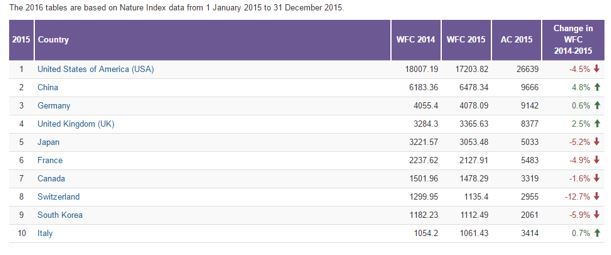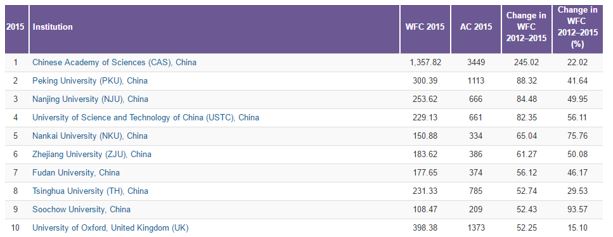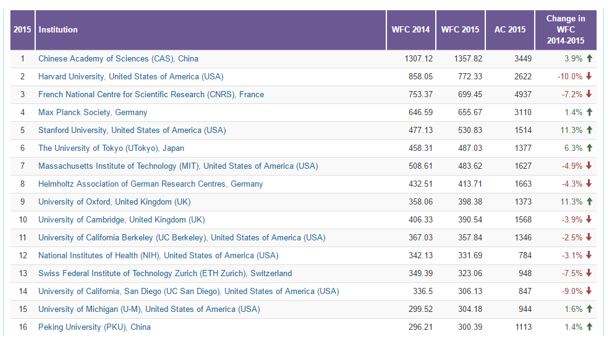
By Henry Hing Lee Chan
China Continues Ascendancy in Basic Science Research
In the 2015 Nature Index published recently, China kept its number two position in the country ranking and continues its push to narrow the gap with the leading country, the US.
Published by the Nature Publishing Group, the Nature Index is a database of author affiliation information collated from research articles published in high-quality science journals. These journals represent the upper echelon of journals in the natural sciences, and include both multidisciplinary journals and some of the most highly selective journals within the main disciplines of the natural sciences. The intense competition and tough selection criteria for papers to appear in these journals make the Nature Index a good proxy for a country’s basic science research capability.

Source: Nature Index
It is worthy to note that the improvement in basic research output is not just limited to the top institutions in China, but also that Chinese institutions accounted for nine out of the top ten institutions that gained the most in the publication score from 2012-2015. Out of the top 100 institutions that improved the most between 2012 and 2015, China accounted for 39 of them.

Source: Nature Index
The
speedy improvement of Chinese quality basic science research paper output
cannot hide the fact that the country is a latecomer to the field of basic
science research and it started from a low base. Even though Peking University
registered the second highest improvement from 2012-2015, the university ranked
number sixteen in the pack of leading institutions with the highest number of
published papers in 2015, and it is going to take a few more years for it to
break into the top ten basic science research institutions if the current
published paper trend persists.
Source: Nature Index
The
Chinese government had set a goal of devoting 10 percent of R&D spending on
basic research by 2020. This is a huge jump from the 5 percent R&D spending
in 2015. On the R&D spending as a percentage of GDP, the target is to raise
it from 2.1 percent of GDP to 2.5 percent of GDP by 2020. With the government
holding a controlling lever on the economy and R&D spending, the expected
basic science research output is likely to see a significant jump in the next
few years.

























Leave a Reply
Your email address will not be published. Required fields are marked *